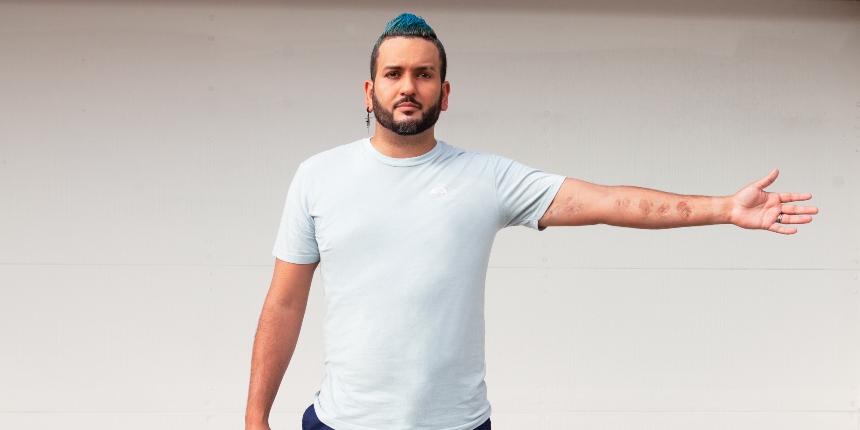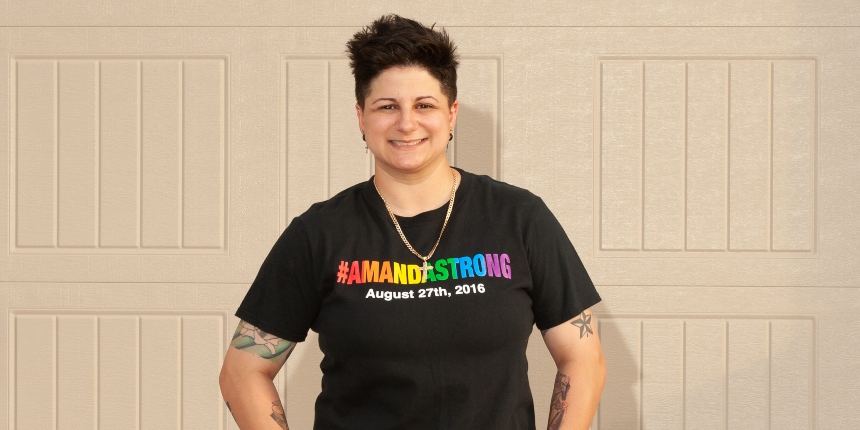"It Just Made Me a Stronger Person"
By Tim Barker, Editorial Contributor
Nothing good comes from a tragedy like Pulse. Yet, in some ways, the horrors of that night, when Johnathan Amaya escaped the shooting, helped prepare him for another challenge.
A couple months before the first anniversary of Pulse, sharp chest pains sent Amaya to urgent care. A week later, he was hit with the diagnosis: acute T-cell lymphoblastic lymphoma, a form of leukemia that typically affects young men.
“I already went through something that was life-changing and traumatic,” he says. “It just made me a stronger person.”
The condition is easy to miss, with symptoms often blamed on excessive exercise or some other common illness, says Dr. Daniel Landau, a board-certified medical oncologist with the Orlando Health Cancer Institute.
“You might think of bronchitis or pneumonia,” Dr. Landau says. “This cancer is not what comes to mind.”
A Fateful Decision
For Amaya, 29, it was a major stumbling block as he sought to get his life back on track after the Pulse tragedy. He suffered no physical injuries in the shooting, but he lost close friends and coworkers.
Today, the Orlando man looks back on that June night and thinks of how easily he could have been among the 49 killed.
He was working that night as a barback, serving in a support role for the bartenders. Usually there were two barbacks, but on that night there were three. So, he was doing light work – keeping the place clean – with plans to get off early and hang out with friends.
He decided to pop onto the patio to pick up glasses when he heard gunfire erupt from the dance room.
“If not for that split decision, I would have been in the line of fire in the most dangerous part of Pulse,” Amaya says.
Instead, he slipped through an open gate in the patio fence and later helped pull a wounded coworker to safety. He kept thinking about how he’d have to come back to work the next day and clean up all the broken glass.
“It took a while to process what had happened that night,” he says.
An Unexpected Diagnosis

(c)Johnathan Amaya
Amaya was in counseling to cope with the aftermath of Pulse when he got the cancer diagnosis.
The long-term outlook for patients with his type of cancer is generally promising, with a remission rate of 90 percent. But hammering the disease into remission is no easy task.
Dr. Landau has vivid recollections of the positivity Amaya brought with him to his appointments and treatment sessions. Such an attitude can mean the difference between success and failure.
“Even in the worst of situations, he would come in with a smile on his face and a lot of energy,” Dr. Landau says. “To have somebody who was so dynamic and so sure that he was going to do well – he was going to beat this and live a normal life – it makes a huge difference.”
Amaya’s journey included 45 days in the hospital, multiple lumbar punctures and an intense six-month chemotherapy treatment, followed by several rounds of maintenance therapy. There were complications along the way, including infections and damage to his hip bone – from exposure to steroids and the chemo – that required surgery.
The Fight Ahead
“Right now, he’s in full remission. But even in the best situation, the relapse rate can be as high as 50 percent,” Dr. Landau says. “Fingers crossed, hopefully he’s going to be cured.”
A year after completing his final maintenance session, Amaya is halfway out of the most dangerous period – with most relapses occurring within two years of finishing treatment.
He just wants to get back to normal – or as close to normal as you can get in the COVID pandemic. He’s slowly getting back into shape at the gym. And he wants to start a more professional job – hopefully in human resources or as a personal assistant – after his graduation last year from Valencia College.
But even if he passes that two-year point, the threat will always be lurking.
“It’s a serious condition that has to be followed for a lifetime,” Dr. Landau says.



